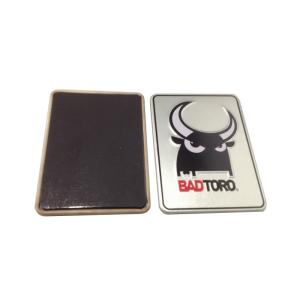What is a tin box?
A tin box is a versatile and practical packaging solution that has been used for centuries to store and transport various items. It is made of tinplate, a thin sheet of steel coated with a layer of tin, which gives it its shiny and rust-resistant surface.
Tin boxes are commonly used to store food, but they can also be used to store non-food items such as cosmetics, stationery, and more. We will explore the technical parameters, production characteristics, production materials, design, exhibition, and industry knowledge related to tin boxes.
Technical Parameters of Tin Boxes
Tin boxes come in various shapes, sizes, and styles. The following are the technical parameters that are important to consider when choosing a tin box:
1. Size and Shape: Tin boxes can be rectangular, square, round, or any other custom shape. They are available in various sizes, from small tins for mints or pills to large tins for cookies or tea. The size and shape of the tin box depend on the size and type of the product it will hold.
2. Thickness: Tin boxes are available in different thicknesses, ranging from 0.17 mm to 0.35 mm. Thicker tin boxes are stronger and more durable, but they also cost more.
3. Closure Type: Tin boxes can have various closure types, such as hinged, slip, plug, screw, or twist-off lids. The closure type depends on the size and shape of the tin box and the product it will hold.
4. Printing: Tin boxes can be printed with various techniques, including offset printing, digital printing, and lithography. The printing method depends on the complexity of the design and the number of colors.

Production Characteristics of Tin Boxes
The production of tin boxes involves several steps, from designing the packaging to shipping the final product. Here are the key production characteristics of tin boxes:
1. Design: The first step in producing a tin box is the design process. This involves creating a 2D or 3D design, considering the product and its intended use, and incorporating the brand's identity.
2. Tooling: Once the design is finalized, the tin box manufacturer creates a mold using the necessary tooling equipment. The mold will determine the shape and size of the tin box.
3. Cutting and Bending: The tinplate is then cut into the desired size and shape using specialized cutting machines. The cut pieces are then bent into the desired shape using various bending machines.
4. Printing: After the tin box is formed, it goes through the printing process. The design is first transferred onto a printing plate, and then the ink is transferred onto the tin box using a printing press.
5. Coating and Drying: To prevent rusting and give the tin box its shiny appearance, a layer of tin coating is applied to the tinplate through electrolysis. The tin box is then dried in an oven to prevent any scratches or damages.
6. Assembly: Once the tin box is coated and dried, it is assembled with its closure type, such as a hinged lid, plug, or screw cap.
Production Materials of Tin Boxes
The primary material used in the production of tin boxes is tinplate, which is a thin sheet of steel coated with a layer of tin. Tinplate is durable, lightweight, and resistant to corrosion, making it an ideal material for packaging. The tin coating also provides a barrier against air and moisture, preserving the quality and freshness of the product inside. Other materials used in the production of tin boxes include printing inks, lacquers, and varnishes.
Design of Tin Boxes
Tin boxes offer endless design possibilities, making them popular for both commercial and decorative purposes. The design of a tin box plays a crucial role in attracting customers and distinguishing a product from its competitors. The design can include various elements such as colors, images, text, and textures. Advanced printing techniques such as embossing, debossing, and spot UV can also be used to add a tactile or visual effect to the design.
Exhibition of Tin Boxes
Tin boxes are commonly used for packaging and displaying products at exhibitions, trade shows, and promotional events. They are eye-catching, easy to customize, and have a long shelf life. Tin box manufacturers also offer the option of creating custom-designed exhibition tins, which can be in the shape of a product or a company's logo. Tin boxes used for exhibitions can be filled with product samples, making them a cost-effective and functional marketing tool.
Huaiyang Metal Manufacture is Located in Dongguan. It is a company specializing in the production and processing of tinplate, metal box and other packaging products.Over 10 years experience in developing & designing & manufacturing & exporting tin boxes and food cans. we have established ourselves as a trusted manufacturer of high-quality tinplate packaging.
We specialize in producing a wide range of tinplate products, including coffee cans,tea cans,Chocolate box,stationery boxes,portable boxes,Storage tank,candle cans,Cosmetic box,biscuit boxes,candy boxes, and more.We take great pride in our production capabilities and have earned various certifications, including ISO, SGS, RoHS, and Food grade requirements etc. Our commitment to using food-grade materials and promoting recyclable packaging makes us a responsible choice for your packaging needs.

Related Industry Knowledge Q&A
1. What are the advantages of using tin boxes for packaging?
Tin boxes are lightweight, durable, and rust-resistant, making them a reliable packaging material. They also offer endless design possibilities, are cost-effective, and can be recycled, making them environmentally friendly.2. What types of products are commonly packaged in tin boxes?
Tin boxes are commonly used to package food items, such as cookies, tea, spices, and more. However, they are also used to package non-food items such as cosmetics, stationery, and gift items.3. How does the thickness of a tin box affect its strength?
Thicker tin boxes are stronger and more durable, making them suitable for heavy or fragile products. However, thinner tin boxes are more cost-effective and still provide adequate protection for most products.
